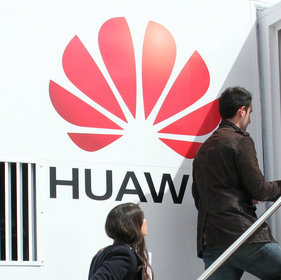The Chinese equipment giant has announced its biggest collaboration yet with UK-based ARM as it targets growth in the cloud and data services market.

After a turbulent end to 2018, Huawei sent a business-as-usual message for the New Year as it unveiled a new server chipset at a Shenzhen media event.
A month after finding itself at the center of a global diplomatic and media storm, following the arrest of its CFO in Canada, the company has launched what it calls the industry's highest-performance ARM Ltd. chipset, Kunpeng 920.
It is its biggest collaboration so far with ARM and marks a departure from its longstanding relationship with Intel Corp. (Nasdaq: INTC).
However, William Xu, a board member and chief strategy marketing officer, said Huawei Technologies Co. Ltd. would continue to work with both companies as part of its multi-supplier strategy.
He said the new 64-core chip and the new ARM-based TaiShan server were responding to the rapid proliferation of data and devices and the need for specific purpose chips and servers.
Industry forecasts predict that aggregate data will expand 18-fold between 2018 and 2025, and artificial intelligence (AI) is driving a tenfold annual growth in computing power, Xu told media at Huawei headquarters.
He says Kunpeng will be deployed for big data and cloud services, although he predicts its biggest use case will likely be for ARM-native applications.
Huawei believes there is a need for an ARM server environment that can support ARM-powered IoT and edge devices more seamlessly and efficiently.
The TaiShan server offers a 3x improvement in running ARM-native applications in the cloud over non-ARM platforms, while the Kunpeng chipset is 30% more efficient than predecessors, it claims.
Professor Dirk Pleiter, the co-founder of a Huawei-backed group called the Open Edge and HPC Initiative (OEHI), said ARM is "bringing back competition in computing."
Currently, 90% of computing systems are running on Intel processors and, with the end of Moore's Law in sight, the emergence of an Intel rival means the industry is "really going in the right direction," he said.
For all the latest news from the wireless networking and services sector, check out our dedicated mobile content channel here on Light Reading.
Huawei says it's been building products with ARM technology since 2004, developing its first smartphone CPU (central processing unit) in 2009 and its first server in 2014.
The Kunpeng 920 joins the Huawei's Kirin chips for smartphones and its line-up of Ascend processors for industrial AI in Huawei's chip portfolio.
ARM made its name in handset chips but is now growing its business in infrastructure segments such as basestations, gateways and servers, where it has taken nearly 30% of the market.
Xu said Huawei's "long-term strategic cooperation" with Intel would "definitely continue," focusing on X86 architecture for use in telecom networks, data centers and enterprise cloud.
While the new server does not face a blanket ban in the US, Huawei's equipment is off limits to government agencies and their suppliers, and it seems unlikely to be sold there.
Despite the recent controversies -- with the arrest of CFO Meng Wanzhou and moves to exclude Huawei's 5G equipment from Australia, New Zealand and the UK -- Xu said Huawei's business operations were "very stable." (See Huawei Cut Out of BT's Mobile Core, Optical & Edge Plans.)
He said Huawei did not expect to see any fragmentation of the global supply chain.
— Robert Clark, contributing editor, special to Light Reading
Read more about:
AsiaAbout the Author(s)
You May Also Like











